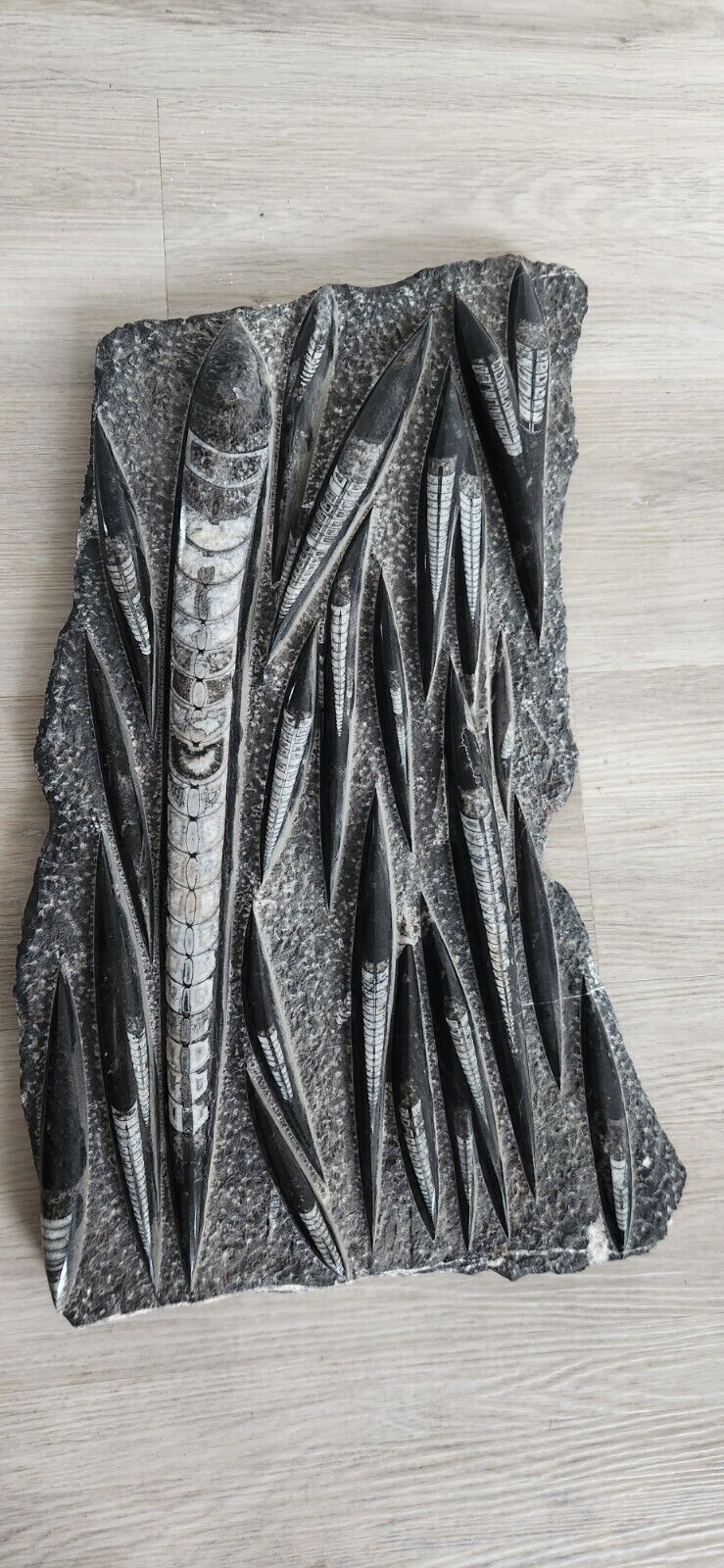-40%
Acrioceras Uncoiled Ammonite (w stand)....shows excellent shell shell retention
$ 382.8
- Description
- Size Guide
Description
DimensionsHeight: 4 Inches; Width: 3 Inches; Depth: 1 1/8 Inches
Description
A smaller sized Heteromorph Ammonite with a small separated portion of another ammonite. This piece shows excellent shell retention and positioning. Sold with 4-peg acrylic stand.
With matrix Measurements: ~4" long x 3" wide x 1-1/8" tall
Specimen Measurement: ~2-1/4" long
Location: Volga River, Russia
Time Period: Lower Cretaceous ~130 MYO
More Information
Ammonites are an extinct group of marine animals in the Cephalopoda class. They are invertebrates and are more closely related to coleoids (squids, octopus, and cuttlefish) than they were to the chambered nautilus, even though they looked much more similar to the later.
The name Ammonite was derived from "ammonis cornua," translated to mean Horns of Ammon. Ammon was an Egyptian god that was typically depicted wearing ram horns, whose spiraled shape is similar to that of an Ammonite.
Ammonites first appeared in the oceans during the Devonian Period, some 400 million years ago. They died out around 65.5 million years ago along with the dinosaurs.
Unlike more commonly structured (homomorphs) Ammonites, Heteromorph Ammonites had uncoiled shells. This body shape made them very poor swimmers. They most likely drifted along in the seas, feeding on plankton, or crawled along the seabed, feeding on slower prey.
Heteromorph Ammonites have been found worldwide.












